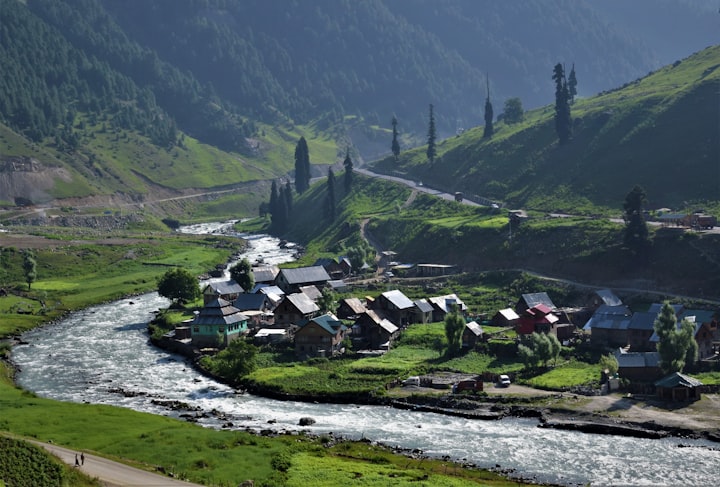Climate Change is Decimating Kashmir’s Agricultural Economy
With rising temperatures and failing crops, the agricultural economy in troubled Kashmir is reaching a tipping point.

Thousands watched online as a Kashmir farmer wept as he wildly tried to unearth his apple crop from the fresh snow deposited by an uncharacteristic snowstorm. The viral video was widely shared in the valley, with many farmers expressing their own frustrations with losing crops due to the changing reality that climate change has brought. Uncharacteristic snowfalls and the change of weather patterns can destroy a farmer’s entire season of work in just a day.
With rising temperatures and failing crops, the largely agricultural economy in Kashmir is reaching a tipping point. The region is already facing desperate poverty, political instability, and loss of other industries like tourism.
One mainstay of the Kashmir agricultural economy is their apple production. Apples make up the vast majority of fruit production in the Kashmir Valley — 90% in 2013, in fact — but the unpredictable weather brought on by climate change hasn’t spared apple farmers.
Apple production is big business in Kashmir. In the J&K state, in fact, half a million families depend on fruit crops for income, which accounts for seven percent of the state’s entire GDP. J&K produces about 80% of India’s apples, so when the crops fail, apple prices across India skyrocket while Kashmiri farmers struggle to keep their heads above water until the next season.
Kashmiris often brag that their saffron is the best in the world, as it is known for its distinctive dark maroon coloring. Saffron is a spice made from the dried threads of the saffron crocus and the darker coloring indicates a stronger flavor.
Saffron is considered the most expensive spice in the world and can fetch between $1100 and $11,000 per kilogram, depending on the country of origin. In terms of production, Kashmir is second only to Iran. However, this may change as Kashmir farmers struggle to adapt to the effects of climate change on their product. There are many factors playing into the decline of Kashmir’s saffron industry, but a significant one is the drought-like conditions and unpredictable precipitation.
Historians aren’t positive when saffron was introduced to the Kashmir Valley. The 12th century Rajatarangini indicates that saffron was flourishing in the region even before the rule of King Lalitaditya in 750AD, making it one of the oldest historical regions of saffron production.
In Kashmir, farmers typically plant saffron on “karewas,” or uplands filled with soil rich in silty clay. The crops are entirely rain-fed so if the rain doesn’t come, the crops fail. But they are just as susceptible to an influx of rain as they are a scarcity. Many fields don’t have adequate drainage mechanisms, so heavy rains can lead to detrimental fungus developing on the crops.
The flowers are picked by hand, usually by the female members of the family, in mid-October to mid-November. Once picked, the gatherer collects the flowers in a wicker basket called a tokri. After gathering the crop, they are processed in a shed or home by separating the stigma from the rest of the flower, a tedious process done by hand. Afterwards, they are dried in a shady area for a few days.
One report quantitatively detailed the decline in the industry saying, “the total area under this crop in the State in 2012 is 3785 ha with an annual production of 11 t while almost one and half decade back in 1997 the area recorded was 5707 ha with an annual production of 15.95 t.”
As more crops fail with increasingly uncharacteristic weather patterns, Kashmir could face issues of increased poverty and food insecurity. The declining agricultural sector could have deadly consequences for a region already facing staggering amounts of poverty and political and economic instability.
About the Creator
Raisa Nastukova
Freelance journalist focused on stories of both Kashmir culture and society as well as the rising tide of climate change.






Comments
There are no comments for this story
Be the first to respond and start the conversation.